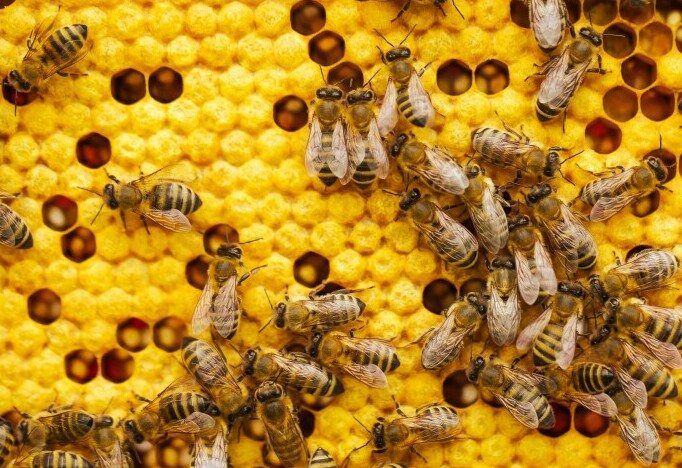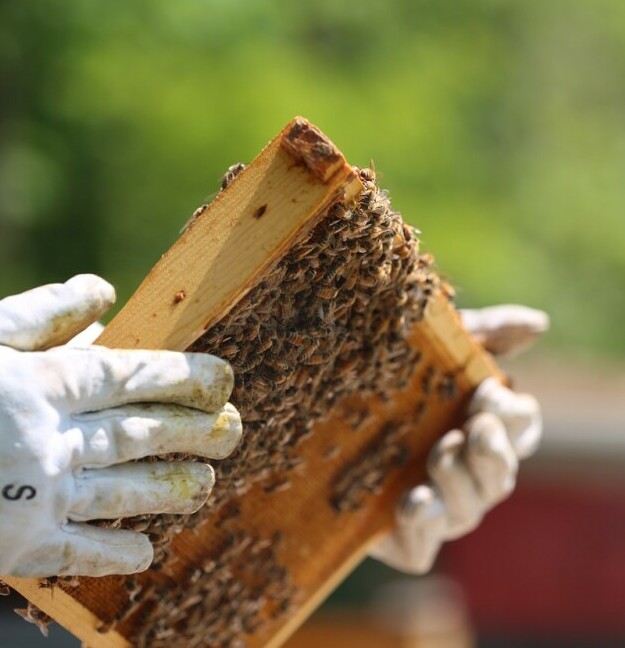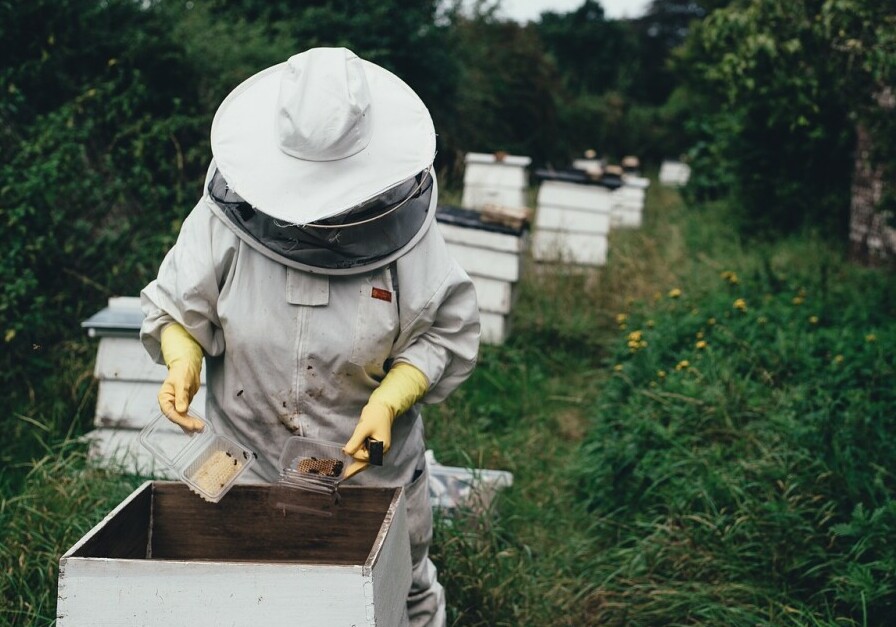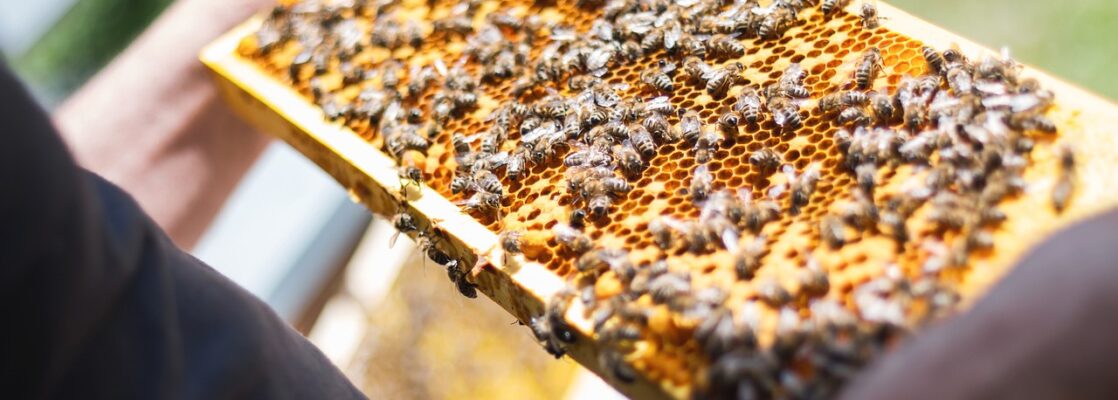I’ll start by explaining why bees are vital to our world. They pollinate crops that are crucial to our diet and help maintain healthy ecosystems. These striped insects do more than make honey; they are instrumental in pollinating plants, which is vital for producing much of the food we eat. Understanding their behavior not only fascinates but is key to maintaining the delicate balance of our ecosystem.
This isn’t just about beekeeping; it’s also about the average person who might encounter bees in their garden or local park. You’re going to find out about the basics of what bees are up to with their buzzing and flying around, and why it’s important to respect and protect these industrious insects.
Now, this article isn’t a deep dive into entomology, but rather practical guidance for interacting with bees safely. Fear and misunderstanding can lead to unwarranted harm to bees or needless worry for humans. By recognizing what bees are trying to communicate, we can ensure a peaceful cohabitation.
That being said, let’s segue into the next section where you’ll learn about decoding the buzz. Recognizing bee movements and sounds is not only fascinating, but it will also arm you with the knowledge to interact with them with confidence. So let’s prepare to understand what the hum of a bee really signifies.
Decoding the Buzz: Interpreting Bee Movements and Sounds
When you’re up close with bees, their behavior can seem complex and intimidating. But once you crack their code, it’s like having a secret conversation with nature. Now, you’re going to find out about the fascinating world of bee communication.
Bee movements are a dance of purpose; each step and turn has a message behind it. For instance, the famous ‘waggle dance’ is a marvel – bees perform it to inform their hive mates about the direction and distance to a food source. It’s this innate GPS that keeps the colony thriving.

They also rely heavily on pheromone signals. These chemical messages can mean a variety of things, from alerting the colony to a threat, to signaling a source of food. A change in the hive’s smell can tell you a lot about its current state. Ever noticed a sudden increase in bee activity? They could be deploying pheromones to round up the troops.
Don’t worry too much about the buzzing around you; it’s typically just background noise for bees as they work. But louder, agitated buzzing can be a sign they feel disturbed. That’s your cue to step back. When bees are swarming, they’re typically non-aggressive; they’re more focused on finding a new home than on attacking passersby.
In my opinion, it’s key to remember these cues. This knowledge helps you stay safe and maintain harmony with these essential pollinators. With understanding, you can move on to how to work safely around them in the next section, ‘Practical Tips for Safely Working Around Bees’.
Practical Tips for Safely Working Around Bees
I’m going to walk you through some smart, practical tips that are going to keep you safe when you’re around bees. It’s not just about avoiding stings; it’s also about making sure that the bees are stress-free and not provoked.
For starters, dressing the part is crucial. You’ll want to wear light-colored clothing since bees tend to be more aggressive towards dark colors, which they associate with their natural predators. The right gear includes a beekeeper’s suit, gloves, and a veil. However, if you’re not doing intensive beekeeping work, just covering up with long sleeves and pants can be enough.
Movement around bees is another thing to be mindful of. Always aim for slow and smooth actions. Quick and jerky motion can startle bees, making them feel threatened and, in turn, defensive. In the bee world, it’s all about peace and patience.
Now, let’s talk sting management. If you’re stung, remain calm. Remove the stinger as quickly as possible to prevent more venom from entering your system. It’s important to have a plan in place for allergic reactions, which can include having medications like antihistamines at hand or an epinephrine auto-injector if you’re severely allergic.

Don’t worry too much about the occasional bee buzzing around you. They’re usually curious or foraging and not out to sting. It’s when you encounter a swarm or a hive that you need to be extra cautious. In the rare case you find yourself in the middle of a bee swarm, stay calm, protect your face, and slowly move away to a sheltered area.
Bee behavior can vary depending on species, location, and time of the year. Stay observant, notice how bees respond to your presence, and modify your methods if necessary.
Remember, these bees are the tireless workers of nature, pollinating plants and contributing to the biodiversity of our planet. By following these practical tips, you’re not only keeping yourself safe but also respecting these fascinating creatures.
Promoting a Bee-Friendly Environment: Do’s and Don’ts
You’ve learned about the basics of bee behavior and the ways to safely work with these vital pollinators. Now, let’s talk about something just as important – creating and maintaining a welcoming space for bees in your area. Making a bee-friendly environment is a crucial step in supporting bee populations and, by extension, the global ecosystem.
DO provide a variety of flowering plants that bloom at different times of the year, and choose native species suited to your local climate and soil. These plants offer essential nectar and pollen sources, giving bees the diverse diet they need to thrive. Additionally, bees will fly within a two-mile radius to find food, so ensuring a range of plants nearby helps support their foraging efforts.

DON’T use pesticides indiscriminately. If you need to use them, opt for bee-friendly options and apply them when bees are least active, like at dawn or dusk. Remember, the safety and wellbeing of bees should always be a consideration in pest control practices.
DO provide clean, fresh water for bees. A shallow water source with places for bees to land can do wonders for a thirsty bee. You can add pebbles or twigs to a dish of water, giving bees a safe spot to hydrate without the risk of drowning.
DON’T forget to educate others about the importance of bees. Share your knowledge and experiences. Advocate for bee conservation in your community, and support local beekeepers and initiatives aimed at protecting bees and their habitats.
By following these do’s and don’ts, you can play a part in safeguarding bees, ensuring that they continue to pollinate the plants that give us food, beauty, and so much more. Your efforts in building a bee-friendly environment contribute to the wellbeing of our planet, one flower at a time.
Here are a couple of other articles you may be interested in:
Common Challenges And How to Overcome Them In Backyard Beekeeping

2 comments on “Understanding Bee Behavior: Tips For Working With Bees”
Lyn
August 13, 2024 at 7:39 amThank you for this informative article about bees. They really are so important in our food supply. But not only this they are really fascinating insects. We do occasionally see swarms of bees in our neighbourhood searching for a new hive. I tend to stay inside when I see this. I’m also interested in the medicinal uses of bee products. I use a product called Propolis which is made by bees and is amazing for treating a sore throat. It stops it dead in its tracks. I’d love to see more articles about bee products also. Thanks
Lyn
Randi
August 16, 2024 at 12:53 amThanks so much for your kind words! Bees really are amazing, both for our food supply and just in general. I totally get staying inside when you see a swarm—they can be a bit intimidating, even though they’re usually just on the move. But it is when they are the most docile. Propolis is incredible, isn’t it? It’s amazing how something so natural can be so effective. I’ll definitely consider writing more about bee products and their benefits. There’s so much to explore, from propolis to honey and beyond. Thanks again for your feedback!